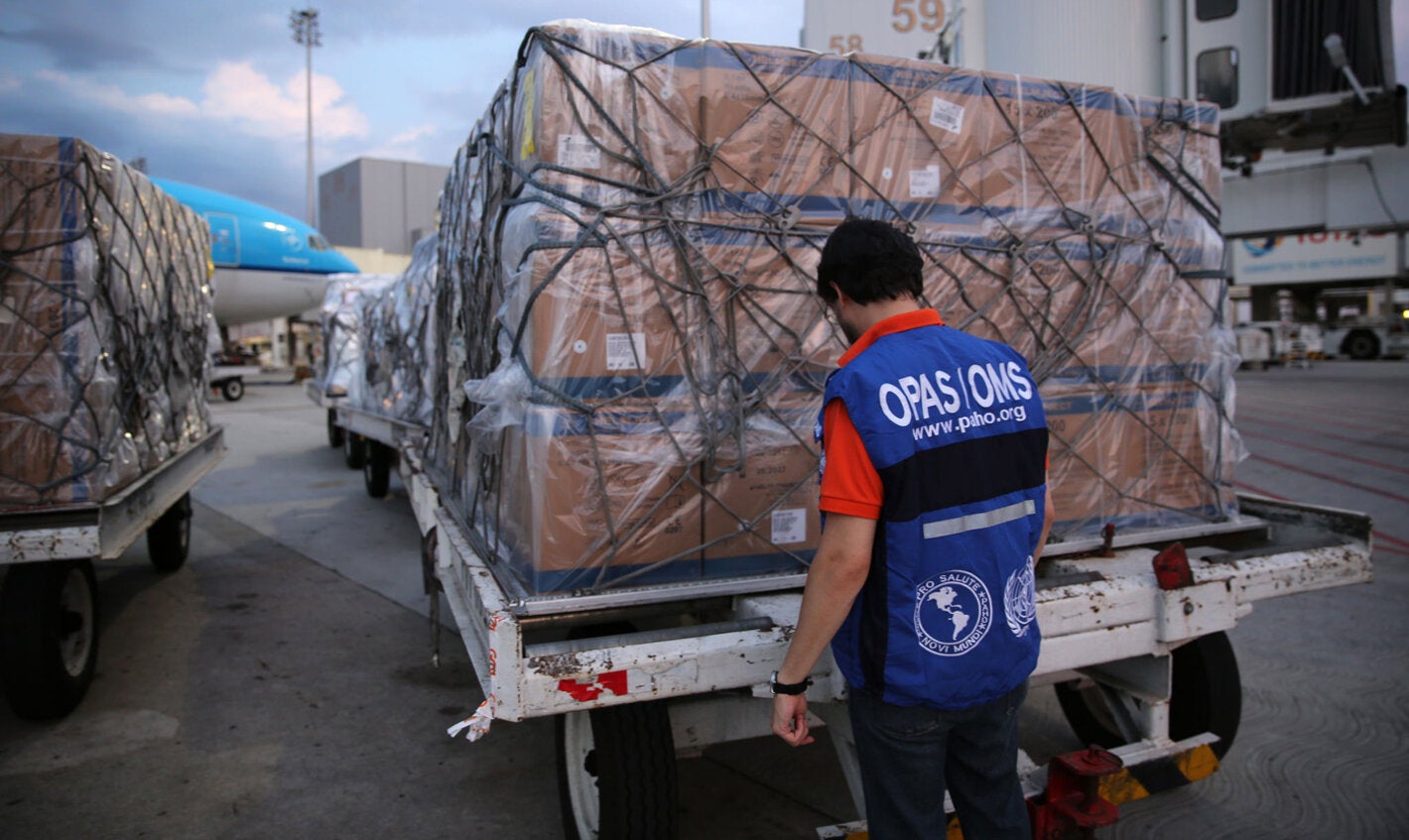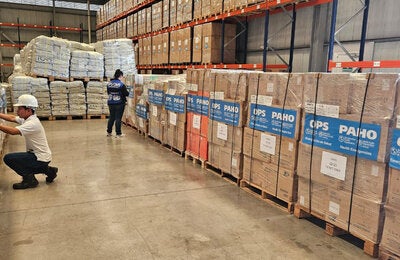
Brasilia, 23 February 2018 (PAHO/WHO) – Brazil recently received a shipment of 20 million syringes for use with fractional doses of the yellow fever vaccine. The syringes were provided by the Pan American Health Organization (PAHO) at the request of the country's Ministry of Health. The size of the syringes – 0.1 cm³, or the equivalent of 0.1 mL – allows health workers to deliver the exact fraction of the product needed, avoiding errors.
In all, 2.43 million syringes have arrived at RIOgaleão – Tom Jobim International Airport, in Rio de Janeiro, and an additional 609,000 were expected to arrive in the following days. The total of 3,048,000 syringes come from a World Health Organization (WHO) reserve stock and were procured through the PAHO Revolving Fund, a mechanism that facilitates the purchase of high-quality vaccines, medicines and related supplies for countries and territories of the Americas. New shipments will be sent in the coming months.
PAHO has been helping Brazil purchase the 0.1 mL syringes since last year, as the country prepared for a possible need to fractionate doses. The Ministry of Health decided to implement the fractionation strategy in January of this year, as the circulation of yellow fever virus was detected in densely populated areas that were not previously considered at risk. The goal is to extend the vaccine supply, protecting more people and reducing the possibility for disease spread.
In this campaign, children aged 9 months to 2 years and people with medical conditions, among other groups, will receive the standard dose of the vaccine.
To date, all of the human cases of yellow fever in Brazil have been linked to sylvatic (jungle) mosquitoes – Haemagogus e Sabethes. The last case of urban yellow fever in Brazil occurred in 1942.
Difference between standard and fractional doses
PAHO and WHO recommend the use of fractional doses of yellow fever vaccine in response to large-scale campaign needs. The use of fractional doses is not recommended as a longer-term strategy or to replace routine immunization practices (with the standard vaccine dose).
The difference between the doses is in the volume injected: the standard dose is 0.5 mL and provides life-long protection; the fractional dose is 0.1 mL (1/5 of the standard dose) and provides immunity for at least 12 months, probably more.
WHO bases its estimate of the immunity period on the experience with mass yellow fever vaccination in the Democratic Republic of Congo in 2016. Follow-up of people who received the fractional dose there showed that it is possible to provide immunity against the disease for at least 12 months. Studies are ongoing to determine the long-term protection provided by fractional doses. Research by the Oswaldo Cruz Foundation (Fiocruz) has shown that the fractional dose protects for eight years.
Case counts
Between July 1, 2017 and February 20, 2018, Brazil’s Ministry of Health reported 545 confirmed cases of yellow fever, which resulted in 164 deaths.
During the same period a year earlier, 557 confirmed cases and 178 deaths were reported. Brazil’s yellow fever cases follow a seasonal pattern, occurring mainly during the summer months (usually with an increase in cases from December to May).
Vaccination Coverage
The Ministry of Health of Brazil has emphasized the importance of vaccination in the states of Rio de Janeiro and São Paulo during the yellow fever immunization campaign. Preliminary data indicate that as of February 19, 5.1 million people had been vaccinated, 4.7 million of them with fractional doses and 422,600 with standard doses. The number vaccinated represents 25.2% of the target audience. The state of Bahia started its campaign in eight municipalities on February 19.
Viral disease
Yellow fever is a viral hemorrhagic disease transmitted by infected mosquitoes. It can be prevented by an effective and safe vaccine. The most common symptoms are fever, muscle pain with prominent backache, headache, loss of appetite, and nausea or vomiting. In most cases, the symptoms disappear after three or four days.
From 15% to 25% of patients enter a second, more toxic phase, in which the risk of death is higher and people may have yellowing of the skin and eyes, dark urine, and abdominal pain with vomiting and bleeding.



